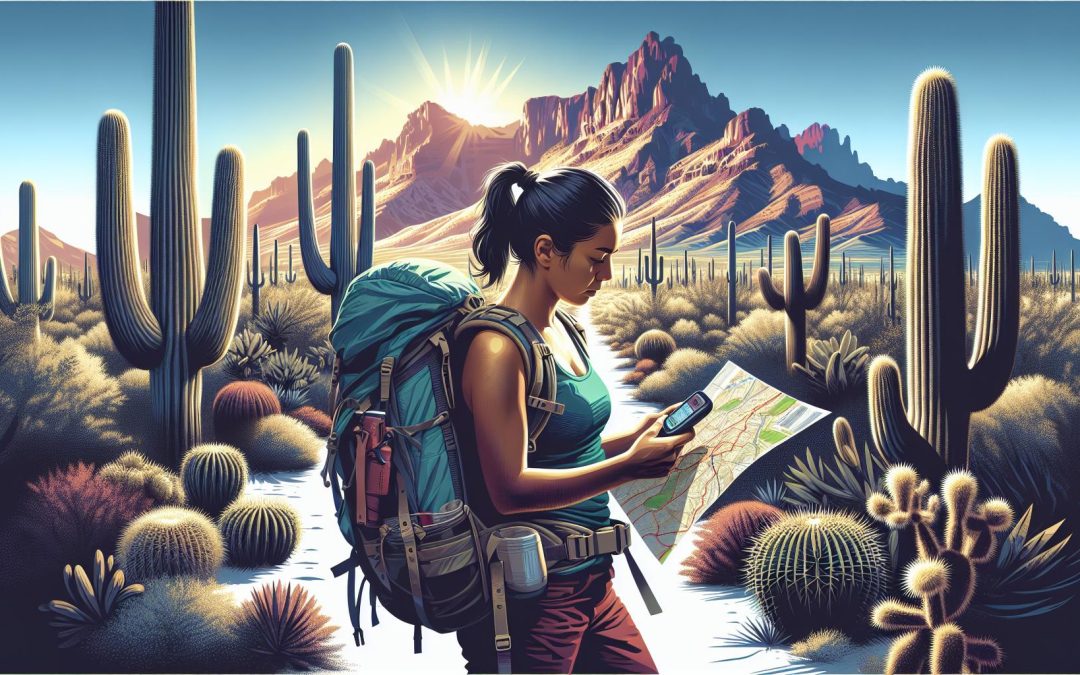Exploring the great outdoors in Scottsdale, Arizona, has always been a thrill for me. From the sprawling deserts to the breathtaking mountains, there’s no shortage of adventures to be had. But with great adventure comes the need for great caution.
That’s why I’ve put together some essential safety precautions for anyone looking to enjoy the natural beauty of Scottsdale. Whether you’re a seasoned hiker or just looking to enjoy a leisurely outdoor stroll, keeping these tips in mind can ensure your adventure is both enjoyable and safe. Let’s dive into how you can make the most of your outdoor experiences while staying safe under the Arizona sun.
Researching the Trail
Before I set foot on any trail in Scottsdale, I make it a point to do my homework. It’s not just about finding a path and walking; it’s about understanding what I’m getting into. This means looking up the difficulty level, estimated time to complete, and the current weather conditions. I’ve found several reliable websites and apps that provide comprehensive reviews and real-time updates from other hikers. This information is crucial for preparing both mentally and physically for what lies ahead.
Another aspect of my research involves checking for any recent wildlife sightings and plant warnings. Arizona’s outdoors are home to a range of wildlife, including snakes and coyotes, and knowing their recent activity can help me stay safe. Additionally, knowing what plants might be in full bloom, especially those that could cause allergic reactions, has proved invaluable on my hikes.
I always look into the trail’s elevation change as well. While a trail might be labeled as moderately difficult, a significant elevation gain can add an unexpected challenge. This type of information helps me decide whether I need to pack extra water or perhaps even reconsider the trail if it’s beyond my current fitness level.
Lastly, I try to find out how well-marked the trails are. Getting lost is a real danger, even for experienced hikers. Trails in Scottsdale vary greatly in this respect. Some are clearly marked with signs at every turn, while others might have faded markers or rely on cairns (small stacks of rocks) for guidance. Knowing this in advance helps me prepare by downloading detailed maps or ensuring my GPS device is fully charged and ready.
By putting in this effort before every hike, I’ve been able to enjoy the stunning landscapes Scottsdale has to offer, without any unwelcome surprises. Plus, being well-prepared means I can help anyone I might come across on the trail who might not have been as thorough in their research.
Checking the Weather Conditions

Before I step foot on any trail, I always make it a priority to check the weather conditions. In Scottsdale, the weather can be as unpredictable as it is beautiful. One moment it’s sunny, and the next, you might find yourself caught in a sudden downpour or facing a drastic temperature drop.
Weather apps have become my go-to resources for real-time updates. I particularly focus on the hourly forecast to plan my start and end times. This strategy helps me avoid the harshest sun in the desert which not only makes the hike more enjoyable but also safer.
Heat exhaustion and dehydration are real risks in the Arizona heat. To combat this, I’ve learned to look for key indicators in the weather forecast:
- High temperatures
- UV index
- Wind speeds
These elements dictate not only the gear I pack but also the amount of water I bring along. For instance, on days when the UV index is particularly high, I make sure to apply sunscreen regularly and wear protective clothing. Similarly, windy conditions prompt me to bring along extra layers to guard against sudden chills.
It’s important to remember that weather conditions can change rapidly. Keeping an eye on the sky and staying updated through my weather app while on the trail allows me to adapt as needed. Whether it means turning back earlier than planned or seeking shelter, being aware and prepared ensures that I enjoy my outdoor adventure safely.
In essence, understanding and respecting the weather plays a pivotal role in my outdoor adventures in Scottsdale. It’s about striking a balance between embracing the challenge and ensuring my safety.
Packing Essentials
When heading out for an adventure in Scottsdale, knowing what to pack is as crucial as being aware of the weather. I’ve learned through my experiences that being well-prepared can make the difference between a pleasant outing and a challenging ordeal. So, I’ll share some of my must-haves for any outdoor excursion in this stunning but demanding landscape.
First off, hydration is paramount. The dry, often scorching Arizona climate demands regular fluid intake, so I always pack at least two liters of water for a short hike and more for longer or more strenuous trails. A good rule of thumb is to drink before you feel thirsty to stave off dehydration.
Next, sun protection can’t be overstated. I’ve come to rely on broad-spectrum sunscreen, reapplied every two hours, along with a wide-brimmed hat and UPF-rated clothing to shield me from the sun’s intensity. Sunglasses are another non-negotiable, offering both comfort and protection against UV rays.
Navigation tools are vital, too. While it’s easy to think we can rely on our smartphones, areas with spotty service require a backup. I always pack a physical map of the area and a compass. Honestly, learning basic navigation skills was one of the best investments I made for my outdoor endeavors.
Lastly, a first aid kit tailored to the environment and your group’s specific needs is a must. Here are some essentials I never leave behind:
- Bandages and antiseptic wipes for cuts or scrapes
- Moleskin for blisters
- An EpiPen if you have known allergies
- Aspirin or ibuprofen for headaches or minor pains
- Tweezers for splinters or cactus spines
Armed with these essentials, I’m ready to embrace the rugged beauty of Scottsdale’s outdoors, prepared for whatever the day might throw my way.
Staying Hydrated
When planning an outdoor adventure in Scottsdale, Arizona, Staying Hydrated isn’t just a suggestion; it’s a necessity. The desert climate can be unforgiving, with temperatures soaring, especially during the summer months. I’ve learned from experience that underestimating the need for water can lead to dehydration, diminishing the enjoyment of any outdoor activity.
For every hour I spend hiking or exploring, I make sure to drink at least one liter of water. This might sound like a lot, but in the dry heat, your body loses fluid much faster than you might realize. It’s not just about quenching thirst; it’s about preventing heat-related illnesses such as heatstroke and heat exhaustion, both of which can be dangerous.
| Time Outdoors | Water Intake (per hour) |
|---|---|
| 1 hour | 1 liter |
| 2 hours | 2 liters |
| 3 hours | 3 liters |
| 4+ hours | 3.5+ liters |
Not all water is created equal though. I always prefer packing electrolyte-rich beverages for longer treks. These help replace salts and minerals lost through sweat and can keep you feeling energized longer. Just don’t rely solely on these; plain water should make up the bulk of your intake.
Another tip I’ve picked up is to drink before you’re thirsty. Thirst is a lagging indicator of dehydration. If I’m feeling thirsty, that means I’m already behind on hydration. I try to take small, frequent sips throughout my adventure, even if I’m not feeling parched at the moment.
I also plan my routes with water sources in mind. While Scottsdale is mostly desert, there are streams and lakes in certain areas. Knowing where you can safely refill your water bottles can be a lifesaver. Just remember, any water sourced from the environment should be treated or purified before drinking.
Emergency Preparedness

When I’m gearing up for an outdoor adventure in Scottsdale, Arizona, one of the top priorities on my list is emergency preparedness. The desert’s beauty hides its potential dangers, and being ready for any situation is not just wise—it’s essential.
First and foremost, I always inform someone about my travel plans. Whether it’s a family member or a friend, someone should know where I’m going, the trails I plan to follow, and when to expect me back. This simple step can be a lifesaver in unexpected situations.
Carrying a fully charged mobile phone is a no-brainer, but in remote areas, service can be spotty. That’s why I also pack a satellite communicator or a GPS device. These gadgets can send out an SOS signal even when my phone can’t catch a single bar. Sure, they’re an additional investment, but they’re worth their weight in gold if they ever need to be used.
Emergency kits are another essential. Mine is compact, yet it contains everything I might need:
- First aid supplies
- A multi-tool
- A flashlight with extra batteries
- Emergency blankets
- Water purification tablets
- Fire-starting materials
This kit has come in handy more times than I wish it had. Whether I’ve needed to bandage a cut or signal for help with my flashlight, it’s my go-to in emergencies.
Lastly, I’ve found it crucial to have a basic knowledge of survival techniques. From learning how to purify water to understanding the signs of heat exhaustion, these skills have bolstered my confidence in handling unexpected challenges. I’ve taken local courses and online tutorials, all of which have taught me invaluable lessons on staying safe.
Remember, the key to enjoying the stunning landscapes and thrilling excursions Scottsdale offers is to stay prepared. With the right precautions and a sense of adventure, there’s no limit to the fun to be had.
Conclusion
So there you have it. I’ve shared some essential tips on keeping safe while enjoying the great outdoors in Scottsdale. Remember, it’s all about preparation and knowledge. By taking the right steps before you head out, you’re setting yourself up for an adventure that’s not just thrilling but safe too. Whether you’re hiking the trails or exploring remote areas, let’s make safety a priority. After all, the best adventures are those we come back from ready to plan the next one. Stay safe and have fun out there!







